after initializing it with git init commamnd, I am getting the following error. Please help to resolve it.
-
2`-Force` to see hidden and system files – Santiago Squarzon Dec 21 '22 at 03:10
-
Welcome! I see you are a new contributor. It is better to include the error message embedded in your question rather than a screenshot. If you edit your answer to include this, be sure to format it as well. – Laura White Dec 21 '22 at 03:10
-
The -a is an argument on the command line. Depending on the method methods you are using a argument is not just text, it must be declared as an array of arguments. So you can try something like this $arguments = @("-a"); ls $arguments – jdweng Dec 21 '22 at 03:14
-
@jdweng, your suggestion makes no difference with respect to calling _external programs_, and - assuming that `-a` is a _parameter name_ - _breaks_ calls to PowerShell-native commands, such as in this case (given that, on Windows, `ls` is an alias of `Get-ChildItem`). Your comment is an unhelpful distraction. – mklement0 Dec 21 '22 at 04:06
1 Answers
tl;dr
Don't use ls -a in PowerShell (on Windows); use the following instead:
# 'gci' is the PowerShell-idiomatic alias of the 'Get-ChildItem' cmdlet,
# which is the analog of the 'ls' utility on Unix-like platforms.
# -Force asks that *hidden* file be shown too.
gci -Force
On Windows,
lsis a built-in alias of theGet-ChildItemcmdlet, whose syntax is very different from that of the standardlsutility available on Unix-like platforms.- PowerShell aliases named for the commands of a different shell / the standard utilities of a different platform are best avoided, given their syntactic incompatibility - see the bottom section of this answer.
Use
Get-Commandto determine which command a given name (ultimately) refers to.Use
Get-HelporGet-Command -Syntaxto see a command's syntax diagram.-Forceis the switch parameter that requests thatGet-ChildItemshow hidden items too, analogous tols -Aon Unix (there's is nols -aanalogue, which would include listing.and.., which is rarely useful, however).
As for what you tried:
ls -atranslates toGet-ChildItem -a.PowerShell's parameter names are typically words (e.g.
-Attributes) rather than mere letters (e.g.,-a)If a given parameter name is a prefix of a full parameter name, PowerShell infers the full parameter name, as long as the prefix is unique, a feature that PowerShell calls elastic syntax, meant for interactive convenience only (in scripts, parameter names should always be spelled out in full, both for readability and long-term stability).
If it isn't unique, the error you've encountered occurs, given that PowerShell cannot predictably infer which parameter you meant to target.
In determining the uniqueness of a parameter-name prefix, parameter aliases are considered as well, even though the error message only mentions the original names of these parameters:
Specifically, parameter
-Directory -File -Hidden -ReadOnly -Systemare mentioned in the error message, all of which have alias names that start witha.You can list the relevant parameters and their aliases as follows:
(Get-Command Get-ChildItem).ParameterSets.Parameters | Where-Object Aliases -Like a* | Select-Object Name, Aliases -Unique
- 382,024
- 64
- 607
- 775
